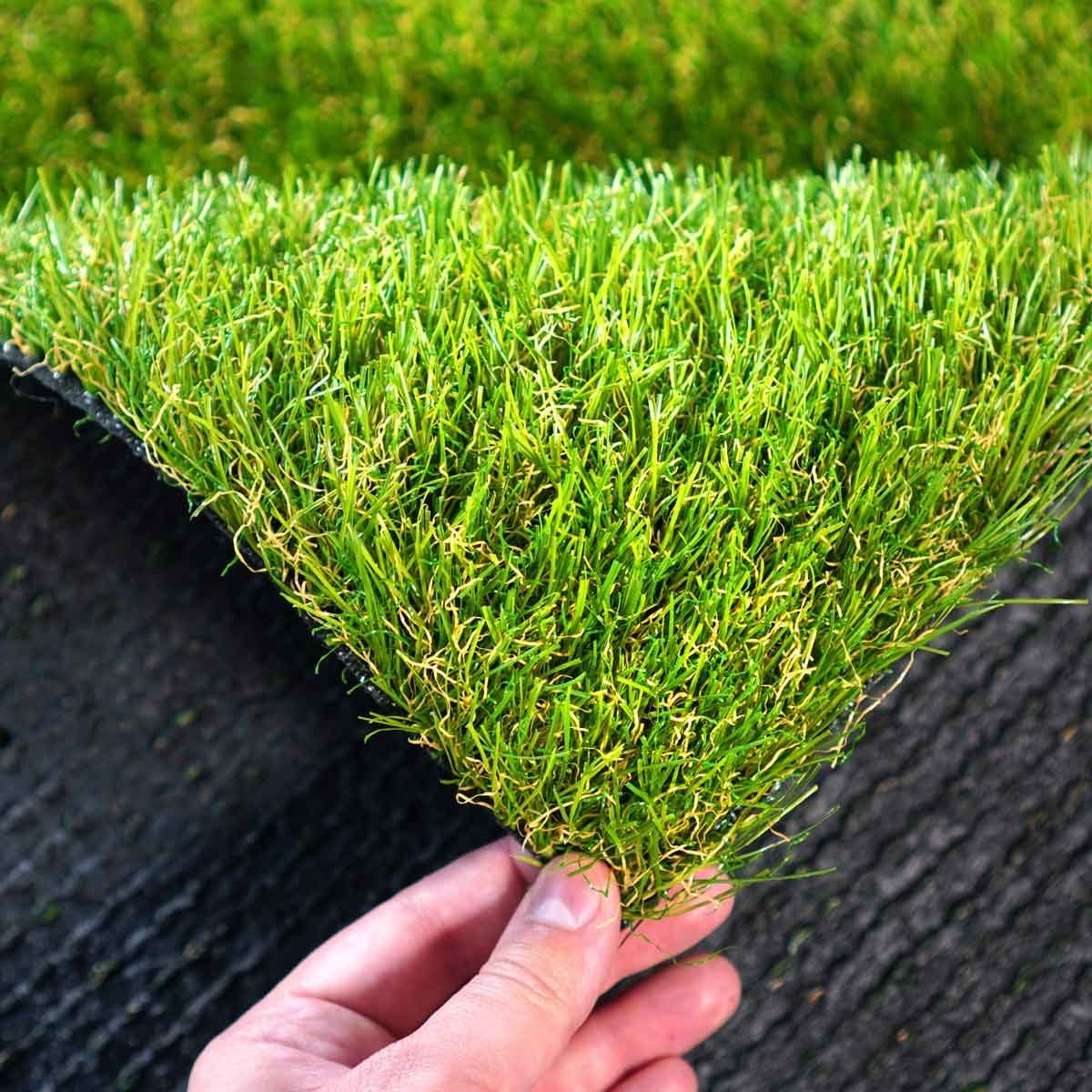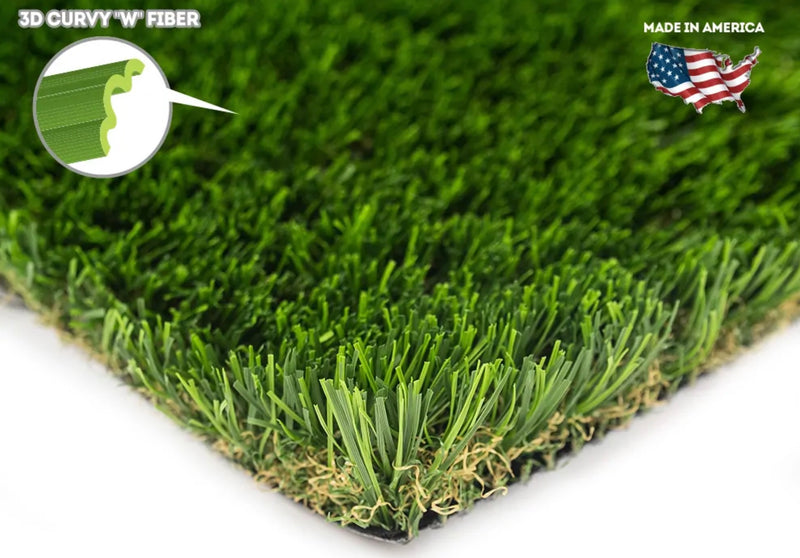Explore the Environmental Advantages of Opting for Artificial Turf Solutions
The adoption of synthetic grass options provides an engaging possibility to attend to pressing ecological difficulties. By substantially decreasing water usage and decreasing the application of unsafe chemicals, these options not only advertise sustainable landscape design yet likewise protect neighborhood environments. The reduced carbon impact associated with reduced maintenance tasks contributes to an extra lasting technique to land monitoring. However, the effects of these benefits expand past plain conservation efforts, questioning regarding their lasting influence on environment conservation and total eco-friendly balance. Checking out these dimensions exposes a complex interaction worth taking into consideration.
Water Preservation Perks
Among one of the most substantial benefits of artificial lawn is its capacity to save water. Conventional grass yards call for substantial watering, particularly in locations susceptible to dry spell or water limitations. In comparison, fabricated grass does not require watering, significantly minimizing the general need for water resources. This attribute is particularly helpful in dry areas where water deficiency is a pushing concern.
By eliminating the demand for regular watering, man-made lawn adds to lasting landscape practices and aids alleviate the ecological influence of extreme water intake. The preservation of water expands to the decrease of drainage, which can lead to dirt disintegration and waterway air pollution.
Furthermore, the installment of fabricated turf enables towns and house owners to assign water resources more successfully, focusing on necessary usages such as alcohol consumption water and agriculture. The change towards fabricated turf not just advertises liable water use yet likewise lines up with broader ecological objectives intended at preserving all-natural resources.
As neighborhoods significantly prioritize sustainability, the water conservation benefits of synthetic grass present a compelling case for its fostering in business and residential landscape design projects.
Reduced Chemical Usage
The change to synthetic lawn substantially reduces the dependence on chemical therapies frequently used in all-natural lawn maintenance. Standard lawn management usually entails the application of pesticides, fertilizers, and herbicides to promote growth and control pests. These chemicals can position dangers to human health and wellness, neighborhood wild animals, and the atmosphere, contributing to dirt and water contamination.
In comparison, synthetic grass removes the requirement for these hazardous compounds. When installed, it requires marginal upkeep, largely including routine cleansing and irregular infill replenishment. This reduction in chemical use not only benefits the immediate atmosphere however also adds to more comprehensive eco-friendly stability. By minimizing the release of synthetic compounds into the community, synthetic grass promotes healthier soil and water systems.
Moreover, the lack of chemical runoff connected with man-made grass installations aids secure local waterways from contamination, sustaining aquatic life and preserving biodiversity. Arizona turf. As neighborhoods increasingly focus on lasting techniques, going with man-made lawn provides a sensible solution that straightens with environmental preservation goals. Through this change, homeowner can appreciate rich green rooms without endangering eco-friendly health, paving the method for a more sustainable future
Lower Carbon Impact

Moreover, the installation of synthetic lawn can result in substantial water preservation. All-natural yards need significant amounts of water for irrigation, which not just contributes to the carbon footprint connected with water removal and treatment however also stress regional water sources. In contrast, synthetic grass requires very little upkeep, requiring no watering, consequently dramatically lowering water usage and its associated power expenses.
Furthermore, the longevity of synthetic grass adds to its lower carbon influence. With a life-span of approximately 15 years or even more, try here the demand for frequent replacements is diminished, resulting in much less waste and reduced power usage in manufacturing and taking care of traditional yard choices. On the whole, synthetic grass provides a sustainable option for eco aware landscape design.
Habitat Preservation
Environment preservation is a vital consideration in the debate over landscape design options, particularly when contrasting fabricated grass to natural grass. All-natural turf lawns often call for substantial maintenance, including using chemicals, fertilizers, and herbicides, which can negatively influence neighborhood environments. These chemicals can leach right into the soil and rivers, harming indigenous flora and animals and disrupting neighborhood habitats.
Artificial turf gets rid of the requirement for dangerous chemicals, therefore protecting nearby wildlife and maintaining the integrity of surrounding communities. The setup of synthetic grass can lead to the conversion of former turf areas into more biodiverse landscapes, such as pollinator gardens or indigenous plant areas, which can sustain local wild animals.
Inevitably, the change to fabricated lawn not just preserves water and minimizes maintenance efforts however also fosters a more unified partnership in between human activities and the natural setting, advertising environment conservation at the same time.
Long-Term Sustainability
Long-term sustainability is an important element in assessing the benefits of man-made grass over conventional turf yards. Among the most significant advantages of man-made turf is its resilience; it can last up to 15-20 years with marginal maintenance, whereas natural yard needs frequent reseeding and substitute. This durability reduces the demand for constant sources, such as water, fertilizers, and chemicals, which are necessary for preserving a healthy and balanced turf lawn.
Furthermore, synthetic lawn contributes to a decrease in carbon discharges linked with yard care devices. Traditional yards frequently call for gas-powered Recommended Reading mowers, leaners, and blowers, all of which add to air pollution. Artificial turf companies phoenix. In contrast, synthetic grass removes the need for such devices, advertising a cleaner environment
Additionally, the production of synthetic grass increasingly uses recycled products, enhancing its sustainability profile. As makers adopt green practices, the environmental impact of synthetic grass remains to lessen.

Conclusion
The fostering of artificial lawn remedies offers considerable environmental advantages, consisting of substantial water conservation, minimized reliance on unsafe chemicals, and a reduced carbon impact. Fabricated turf help in preserving natural environments by reducing land disruption and promoting long-term sustainability via the use of long lasting products. Collectively, these aspects underscore the capacity of synthetic grass to add favorably to environmental health and wellness and supply a feasible alternative to conventional landscaping methods in a significantly resource-conscious globe.
In contrast, fabricated turf does not require watering, dramatically decreasing the general need for water sources. By minimizing the release of synthetic substances right into the ecological community, synthetic grass advertises much healthier dirt and water systems.
Furthermore, the installation of synthetic grass can result in significant water preservation. In comparison, artificial turf needs very little maintenance, needing no watering, consequently dramatically lowering water use and its associated energy costs.
